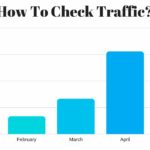The Impact of Canva on Graphic Design
Canva, a popular graphic design platform, has revolutionized the way individuals and businesses create visual content. With its user-friendly interface, drag-and-drop functionality, and vast library of design elements, Canva has made graphic design accessible to everyone, regardless of their design experience or expertise. Users can easily create professional-looking graphics, presentations, social media posts, and more with just a few clicks, thanks to Canva’s intuitive tools and templates.
The Rise of Canva
Founded in 2012 by Melanie Perkins, Cliff Obrecht, and Cameron Adams, Canva quickly gained popularity for its simplicity and versatility. Its freemium model, which offers basic design features for free and more advanced options for a subscription fee, has made it a favorite among individuals, small businesses, and even large corporations. Canva’s collaborative features also make it easy for teams to work together on design projects, regardless of their location.
Canva’s Impact on the Graphic Design Industry
Canva’s success has had a significant impact on the graphic design industry. Traditional graphic design software, such as Adobe Creative Suite, has faced stiff competition from Canva’s easy-to-use platform and affordable pricing. Canva has democratized design, allowing anyone with an internet connection to create visually appealing content without the need for expensive software or extensive training.
The Threat of AI to Graphic Design Platforms
As artificial intelligence (AI) continues to advance, there is a growing concern about its impact on graphic design platforms like Canva. AI-powered design tools, such as Adobe Sensei and RunwayML, are capable of generating designs based on user input and data analysis. These tools can automate many aspects of the design process, potentially reducing the need for human designers.
Canva’s Response to the AI Threat
Recognizing the threat posed by AI to the graphic design industry, Canva has been proactive in integrating AI into its platform. Canva’s “Magic Resize” feature uses AI to automatically adjust designs to fit different formats, saving users time and effort. Canva has also introduced AI-powered tools for image editing, font pairing, and design suggestions, enhancing the user experience and keeping pace with technological advancements.
The Future of Canva in the Age of AI
While AI poses a significant challenge to graphic design platforms like Canva, the company’s focus on innovation and user experience gives it a competitive edge. By embracing AI technology and integrating it into its platform, Canva can stay ahead of the curve and continue to meet the evolving needs of its users. As AI becomes more prevalent in the design industry, Canva’s ability to adapt and leverage this technology will determine its survival in the age of AI.
In conclusion, Canva has indeed revolutionized graphic design with its user-friendly interface, extensive design options, and collaborative features. While the rise of AI presents a challenge to graphic design platforms like Canva, the company’s proactive approach to integrating AI into its platform positions it well for the future. By staying innovative and responsive to technological advancements, Canva can continue to thrive and evolve in the age of AI.
More from my site






